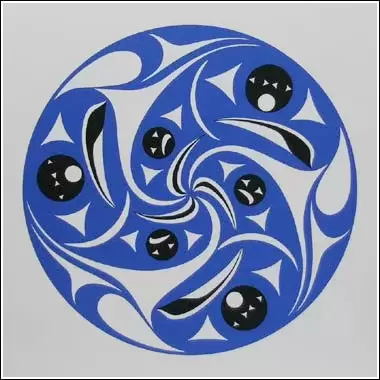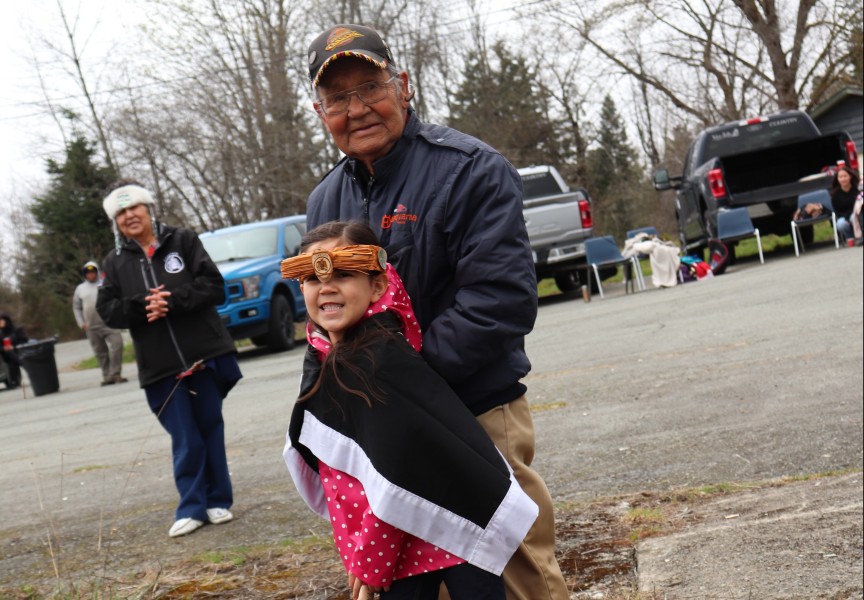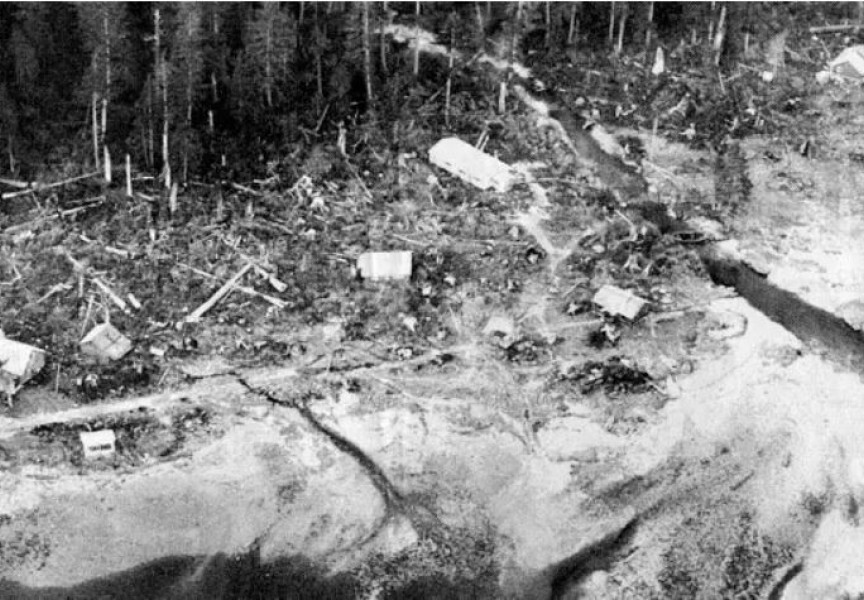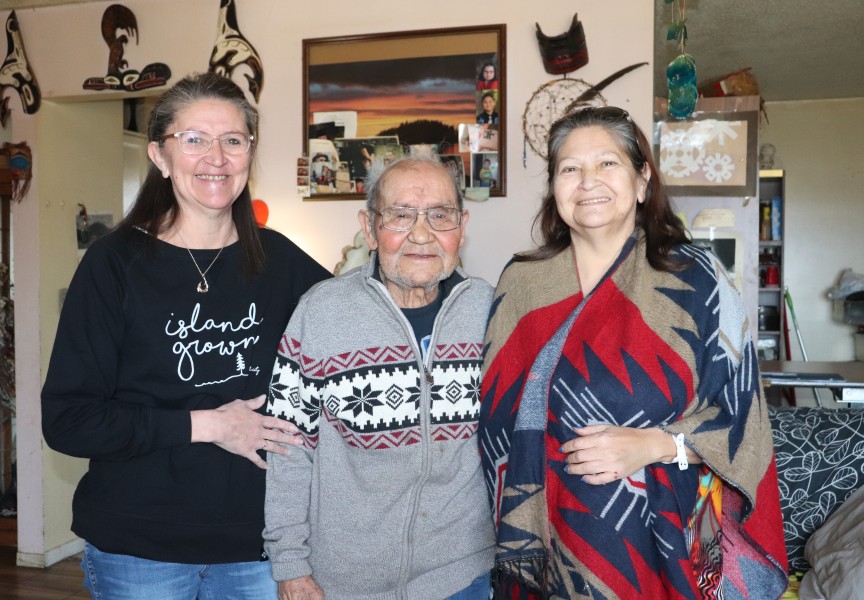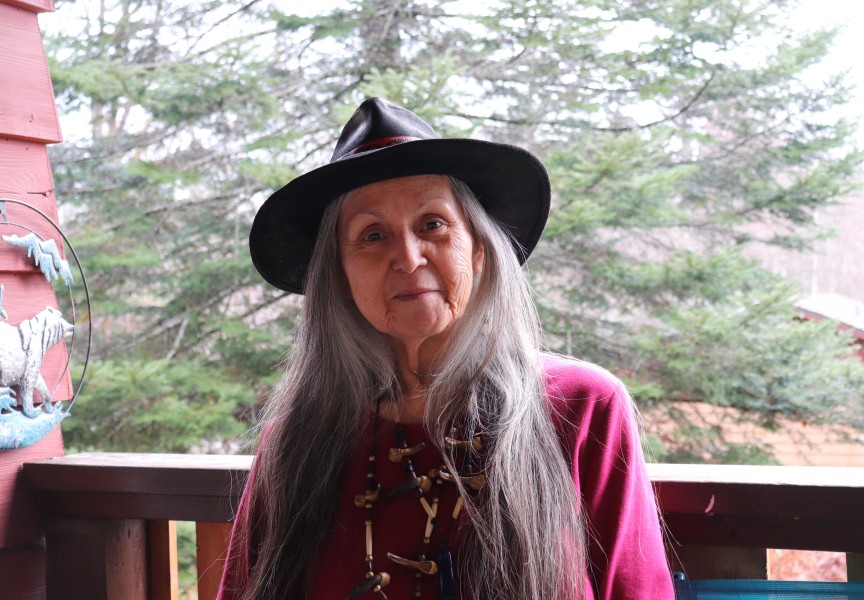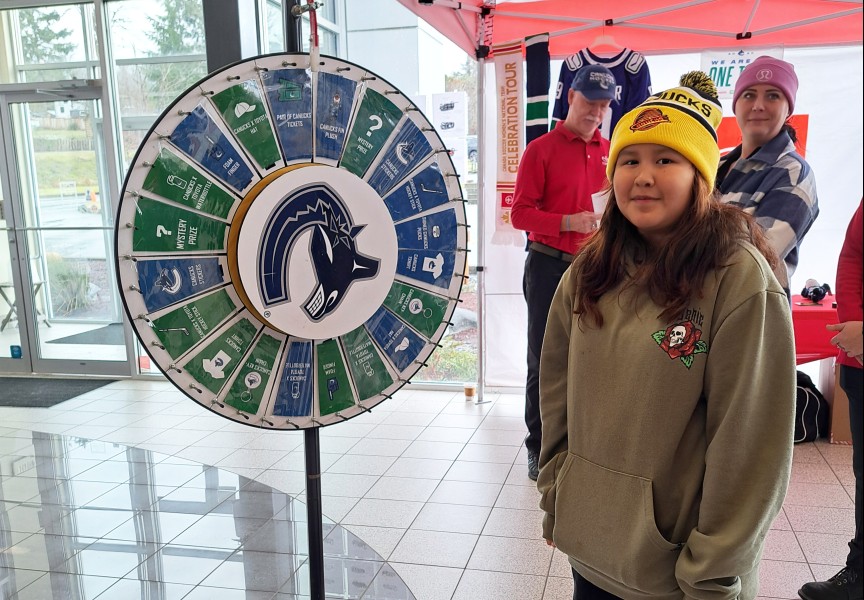The Hul’quimi’num philosophy of nutsa maat translates literally into English as ‘we are all one.’
Ph.D candidate Qwul’sih’yah’maht, Robina Anne Thomas, believes that the teaching, one of many that has guided the generations to the present day, is core to resolving what Thomas says is a critical leadership crisis being experienced in First Nations communities today.
She draws the conclusion in her dissertation entitled Protecting the Sacred Cycle: Xwulmuxw Slhunlheni and Leadership, in which she asks 13 Hul’quimi’num women the meaning of leadership.
Thomas said these women, interviewed separately, overwhelmingly describe leadership as the effort to maintain the connection between the past, present and future.
The women believe the threads that run through that continuum are the teachings provided by the olden day people.
Thomas, who was born in Chilliwack, is Lyackson, Snux’ney’muxw and Sto:lo too, but she was raised in Zeballos on the West Coast of Vancouver Island. She said it was in this remote area of the island that she learned what it was to be Xwulmuxw Mustimuxw, or an indigenous person.
Thomas is the oldest child of late Kris Josephson, a logger, and late Doris Josephson, nee Prest. Her great grandmother was Jenny Wyse of Snuy’ney’muxw, and her late grandmother was Qwul’sih’yah (Lavina Prest, nee Wyse) of Snuy’ney’muxw. They were traditional people who participated in traditional ceremonies and lived their indigenous values and beliefs.
Thomas’ grandmother was raised in “a knowledgeable strong family that was very rooted in Xwulmuxw ways of knowing and being,” Thomas writes in the introduction to her dissertation. And even though Qwul’sih’yah passed to the spirit world in 1991, Thomas continues to seek out her guidance and direction through prayer.
It was on one such occasion that Thomas came to decide on her doctoral topic.
In thinking about the important role that her grandmother had played in her life, it occurred to Thomas that women, as givers of life and keepers of the culture, had been pushed out of the leadership role they had once held in indigenous communities.
A foreign governance system that favored male leadership and promoted recognition of the individual and his rank had replaced the acknowledgement that in indigenous communities each person mattered and their contributions were important.
Worse yet, indigenous women and their children, once revered and protected, had found themselves under attack by that same foreign system through the Indian Act, Indian registry, and other colonial precepts and policies.
Thomas said she wanted to challenge that colonial model, replicated in First Nation community after First Nation community, which had worked so hard—Thomas believes systematically—to kill the Indian in the child, severe the artery of culture and usurp the recognized leadership provided by women, like her grandmother.
Thomas watched as her grandmother lived “uy’skwuluwan” or “in good mind and spirit” every day. Her kind and gentle ways impacted the lives of her 27 grandchildren greatly, and continues to provide inspiration and guidance two decades now since her passing.
If that’s not leadership, what is?
“Because of the way that she lived as a human being, she was our leader and our hero,” Thomas explained.
It wasn’t difficult finding women leaders in the Hul’quimi’num communities on Vancouver Island and the mainland to interview, Thomas said.
“Our communities are full of absolutely remarkable women leaders,” Thomas writes. But the reality is that their work goes largely unrecognized.
Thomas first prepared a short list of names of women she identified as leaders, and then she asked those Hul’quimi’num women on it: “If you could only interview one woman and discuss indigenous women and leadership, who would you interview?”
The list expanded beyond the hoped for 10 women, to 11 and then 12 and then 13. The list included five women who have since passed away—Thomas’ mother Doris and cousin Pam Williams in 2006, Thomas’ aunt Delilia Helen Kamai in 2007, Viola Wyse, chief of the Snuy’ney’muxw, in 2009, and another aunt, Marie Underwood, in 2010.
All were exemplary leaders for a variety of reasons, Thomas explained, but common to them was that they each lived their values and beliefs.
It’s what is described by academic/ activist Dr. Taiaiake Alfred as behaving “indigenously”. Alfred was a member of the supervisory committee for the dissertation that will earn Thomas her Doctor of Philosophy in Indigenous Governance in the Faculty of Human and Social Development at the University of Victoria.
“When I think about the magnitude of these losses, I know it is time to finish my work before we lose any more women and their teachings,” Thomas wrote. She defended her dissertation (the chance to explain the paper and answer any questions from a panel of professors) on April 4.
What has become recognized as the big theme of the dissertation is what Thomas describes as the Sacred Cycle, a model of leadership that is rooted in the traditional teachings—u y’skwuluwan and nutsa maat, as well as teachings from Wild Woman on how to protect children, and other teachings that ensure everyone, despite their flaws and challenges, are cared for and loved.
Key, however, is the requirement that the past and present connects into the future.
The term Sacred Cycle was borrowed from a work by Thomas’ son Dylan. As an artist, he appreciated all the other artists who were generous in sharing their knowledge with him as he developed his talent. He now feels a responsibility to those young artists coming up behind him to pay it forward, she said.
In other words, the teachings of the past are lived in the present and taught so that they will remain strong for those yet to come.
One woman Thomas interviewed said she is committed to passing on the Hul’quimi’num teachings because she recognized how much strength she got from the lessons taught to her by her grandmother.
Collectively, writes Thomas, the teachings can provide all the necessary skills and tools needed for people to be strong leaders.
Nutsa maat, for example, teaches people to work together and share everything and keep only what is needed, said Thomas, but, first and foremost, it is about sharing the teachings.
Nutsa maat was also about speaking out for your beliefs, and to never sit quiet if something is seen that could one day bring about harm.
This dissertation, said Thomas, is her speaking out.
If we are all one, asks Thomas, where is leadership in protecting women and children? Where is the outrage that half of all children in care are aboriginal when the aboriginal population makes up only about four per cent of the population? Where is the outrage that only 20 per cent of those children in care will graduate high school?
Thomas tells Ha-Shilth-Sa that she is not satisfied with the role today’s leaders are playing; that their focus is on such pursuits as land claims, or self-aggrandizement or personal gain.
“Our teachings are purposeful and inclusive,” Thomas writes. “Never is anything about self—our traditions were quite selfless and community oriented.”
When they were asked to share their thoughts on leadership, the women were not concerned so much with who held which post at the band council or the First Nations Summit or Assembly of First Nation. Instead, what emerged as a central theme in the women’s interviews was the importance of living the teachings and ensuring their continuity into the future. They said that was the critical role of leadership.
Women need to start speaking out, Thomas said, to re-establish their leadership role in communities. Speaking out was a part of what women used to do all the time, especially for children. It was required when things weren’t progressing in a good way. It was a responsibility.
Thomas said she wants to “unsettle” the current concept of leadership, and “stand up” the women of Indigenous communities who continue to “live indigenously.”
“The Indian Act not only stripped women of their traditional roles, it imposed a form of governance that vested all power to male leadership,” Thomas writes.
She said that by protecting the Sacred Cycle, each woman she interviewed demonstrated an act of resistance and are activists, even though none of them would identify as such.
“At a time when so many of our women and children have been systematically displaced, we see these women fighting to hold onto our teachings…
“These women and their lived experiences show a commitment to the Sacred Cycle, which is what leadership should be all about—protecting the Sacred Cycle rooted in teaching from the past for the present and the future,” Thomas concludes.

